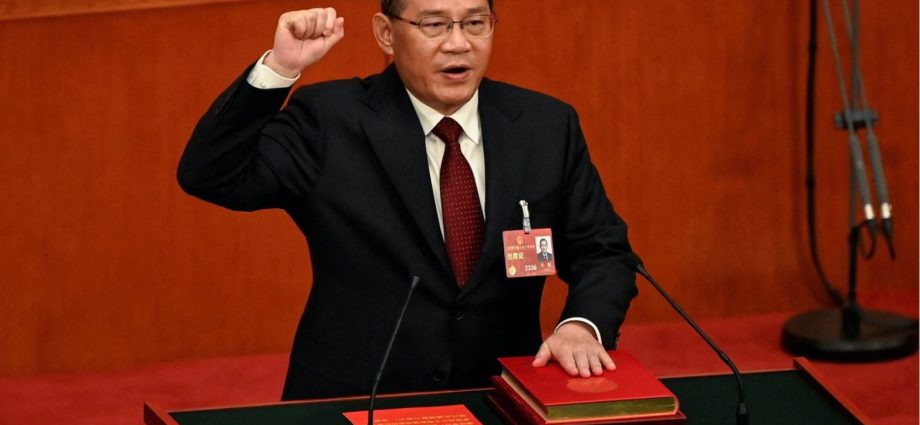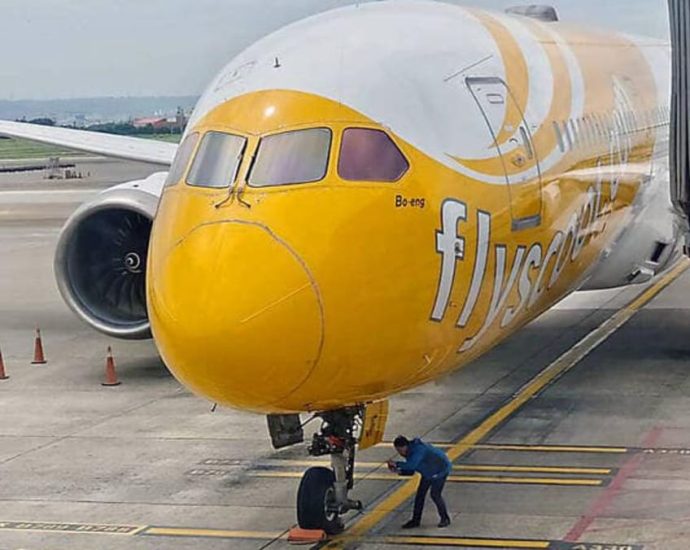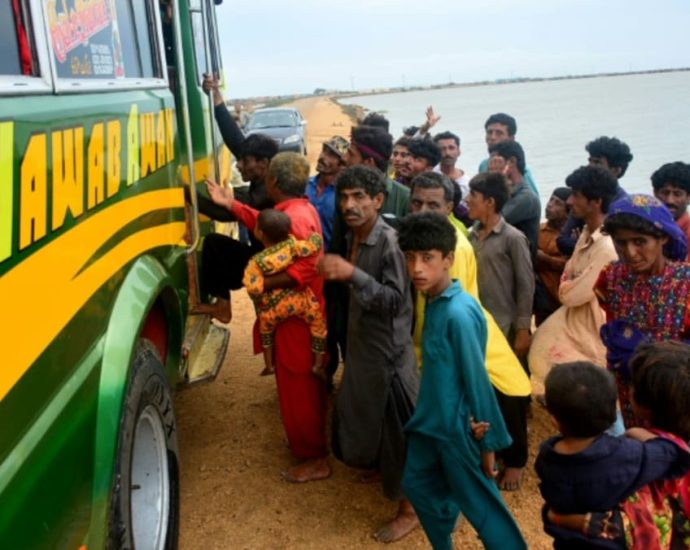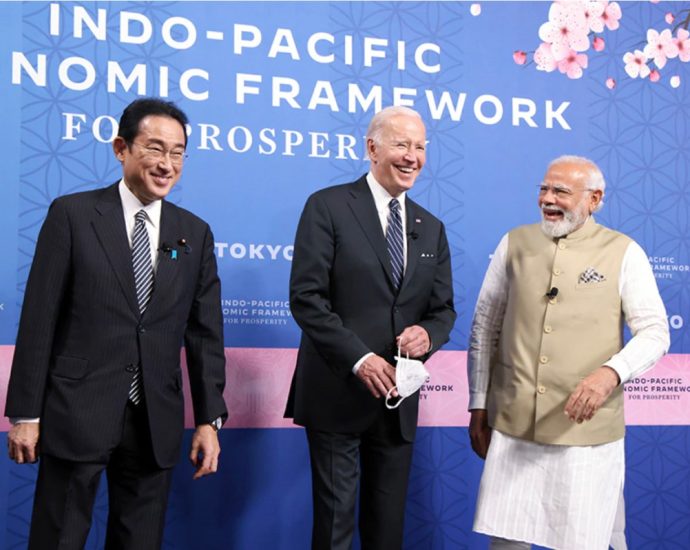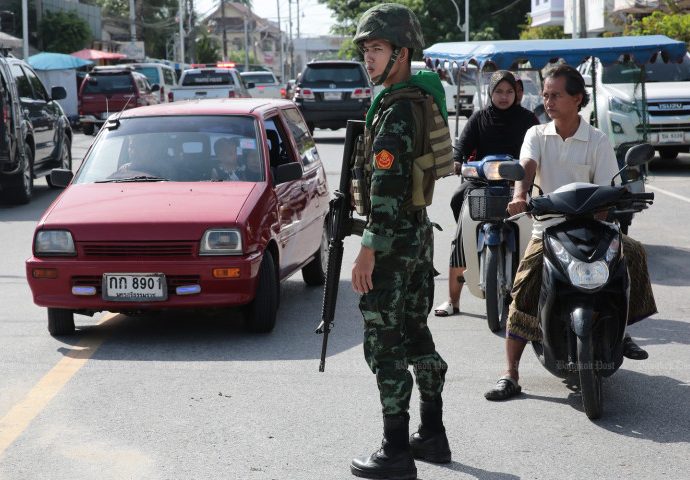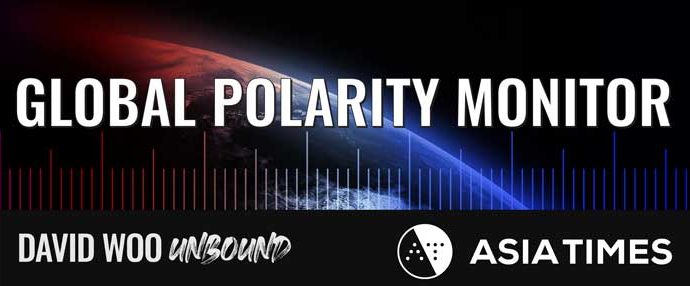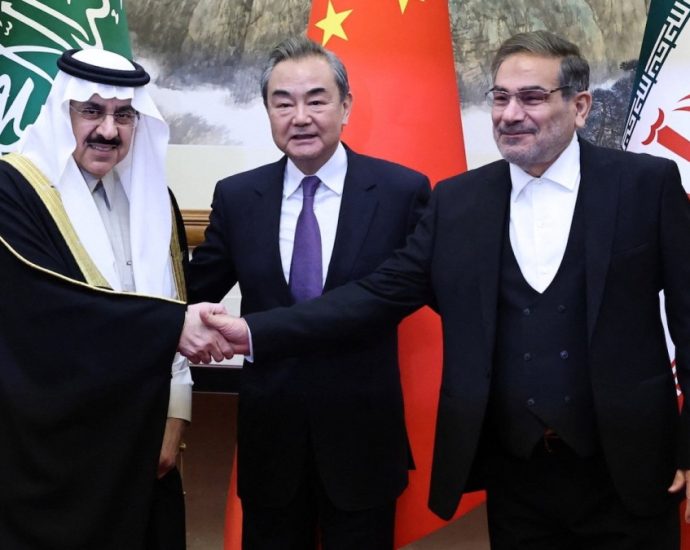Tsai holds the key to a China tech revival
There’s a certain logic to Alibaba Group bringing back Joseph Tsai following his foray into owning the Brooklyn Nets basketball team.
The future of China’s most-watched tech player presents one of the most tantalizing jump-ball moments in global finance. Looked at one way, putting Tsai back into the game is a savvy move by Alibaba’s board.
The company’s leadership team seemed to decide that Daniel Zhang wasn’t the right chairman and CEO to execute a sweeping restructuring to split Alibaba into six separate units.
So who better to turn around the struggling e-commerce giant than Tsai as chairman and fellow co-founder Eddie Wu as chief executive officer?
Of course, only time will tell if pulling Tsai off the bench is the right decision. Some argue that Alibaba might do better with a new generation of leaders, not members of the old guard so close to founder Jack Ma.
Yet Alibaba’s ability to return to strong profitability looms in the background as Chinese Premier Li Qiang takes his first shots on the world stage.
This week, Chinese leader Xi Jinping’s No 2 is visiting Germany and France. The ostensible goal of Li’s first official foray abroad is to sell his China-is-back-in-business campaign and to stabilize ties with Europe’s top economic powers.
Looming in the background of every meeting, though, is Beijing’s perceived inhospitality toward multinational companies keen to harness China’s rise. The same goes for the Xi era’s tolerance for tech disruption at home.
This latter question has complicated foreign direct investment decisions since late 2020, when Team Xi pounced on Alibaba’s Ma.
Days after Ma criticized Beijing regulators for antiquated thinking in a Shanghai speech, the regulatory empire struck back. A planned November 2020 initial public offering by Ma’s Ant Group was scrapped.

Xi’s move shocked global finance circles. Ma had long been the face of Chinese innovation, a regular presence on the Davos set whose spectacular success heralded the nation’s global tech ambitions. Ant’s IPO, which would have been the globe’s biggest ever, aimed to supersize the point.
Six years earlier, Alibaba’s splashy IPO in New York set the stage for China Inc’s internationalization. Only this time, Ma’s fintech outfit planned to sell about $37 billion in shares in Shanghai and Hong Kong. It would’ve signaled China’s arrival as a tech and finance titan.
The crackdown that followed was the ultimate economic buzzkill. After sidelining Ma, regulators turned their sights on Baidu, Didi Global, Tencent and others.
At the time, Xi’s government went after Alibaba for what it argued was monopolistic behavior. Since that period, Alibaba shares lost roughly 70%, killing more than half a trillion dollars of value.
China’s most watched company never quite got its groove back. Competition from companies like ByteDance Ltd and PDD Holdings didn’t help. Now, Alibaba also must work to regain market share in cloud services, which will now be Zhang’s focus.
The good news here is that the “transition enables Zhang to dedicate fully to cloud, as it is in the best position to embrace AI opportunities ahead,” says Jefferies analyst Thomas Chong. “We expect AI is a priority for all business lines of Alibaba.”
In a broader sense, though, Tsai taking the reins at Alibaba could play into Premier Li’s pitch that China is re-prioritizing private sector innovation while Beijing claims it wants to tame trade tensions with the US.
Here, Vey-Sern Ling, managing director at Union Bancaire Privee, speaks for many when he calls Alibaba “a China proxy” that can be “dragged down by geopolitics and China’s economy.”
As such, the board’s move to put Tsai in charge is a very big deal says analyst Rui Ma, founder of advisory Tech Buzz China. “Alibaba is constantly reshuffling its leadership, but rarely at the topmost level,” Rui says.
Adds Yale University law and history professor Taisu Zhang: “I suspect I’m not the only person surprised by Joe Tsai’s re-ascendancy at Alibaba in such uncertain times.”

The biggest previous shakeup was in 2019, when Ma formally stepped away from Alibaba’s management. Tsai’s ascension suggests that Ma’s vision for where the company plans to head next is once again guiding Alibaba.
As such, says analyst Fawne Jiang at Benchmark Co, there’s reason to “believe that Joe’s takeover as the chairman should help to boost investors’ confidence.”
Brian Wong, an early Alibaba employee and former special assistant to Ma, told Bloomberg that Tsai’s rise is “exactly what an organization as big as Alibaba needs, and one that has international aspirations. He’s in a very good position, given his background and skills, to kind of play that role and really help bridge the company from China to the world, and vice versa, the world to China.”
Tsai will need to be all this and more as he tries to execute Alibaba’s plans to split its business into six separate units, the most radical restructuring in the company’s quarter-century history.
Each business group will have separate lines of management and will be empowered to raise outside funding and go public.
In March, when the plan was first announced, Alibaba said the shakeup is “designed to unlock shareholder value and foster market competitiveness.”
At the same time, analysts at S&P Global Rating argue that Alibaba’s earlier payment of a fine over alleged monopolistic behavior removes “a significant overhang” for Alibaba shares. The settlement, S&P concludes, “removes the possibility of more serious consequences.”
Analyst Zerlina Zeng at CreditSights notes that “we think that the corporate reorganization reduces the risk of cash burn for Alibaba to fund unprofitable business lines.”
Apart from Taobao & Tmall, most other Alibaba business units “are loss-making,” Zeng says. They include cloud services, food delivery arm Ele.ma, logistics arm Ampa and overseas e-commerce platforms like Lazada and AliExpress.
“We estimate that a large chunk of Alibaba’s capex and investments over the past few years were used to expand these business units,” Zeng says. “We expect the potential separate equity fund-raising (including IPOs) of these business units to help ease the cash burn for Alibaba, a credit positive in our view.”
All this gives Tsai space to reboot a corporate behemoth that’s had a decidedly rough few years. The stakes are even higher than that considering that Alibaba’s “split-up could also serve as a template for Alibaba’s peers” over time, notes Evercore ISI analyst Neo Wang.
Tsai, 59, is a Taiwan-born, US-educated innovator with a uniquely eclectic background. Along with buying a NBA basketball empire, Tsai was a key player in Manhattan commercial real estate, Hong Kong finance at Reorient Group Limited and more recently a blockchain and cryptocurrency enthusiast.
Premier Li’s inner circle was almost certainly consulted on Tsai’s taking over at Alibaba. Given Li’s own background with Alibaba, this could prove to be an intriguing partnership of sorts.

In the 2010s, Li served as governor of Zhejiang province, where Alibaba is headquartered. Reportedly, Li was close to Ma. Hence the reasons why many observers think Li’s rise to the top of Beijing’s power pyramid augurs well for the high-tech sector’s return to economic prominence.
This is expected to be a key talking point that Li will advance in Europe. In Berlin on Monday, Li told German business executives that increased cooperation between China and Europe is vital to global prosperity.
Li and Chancellor Olaf Scholz voiced support for binding their economies more closely together and working to reduce climate change risks.
Li told reporters that “China and Germany, as two influential major powers in the world, should join hands to cooperate closely.” Beijing, he said, is keen on cooperating in sectors including manufacturing, electric vehicles and green finance.
Still, much of Li’s sales pitch in Europe is that, today’s economic challenges and Sino-US trade tensions aside, the future is bright for Chinese growth, innovation and foreign investment.
For a case in point, all Li needs to do is point to how Alibaba is raising its game – and, perhaps, offering pointers to other China Inc disrupters.
Follow William Pesek on Twitter at @WilliamPesek

